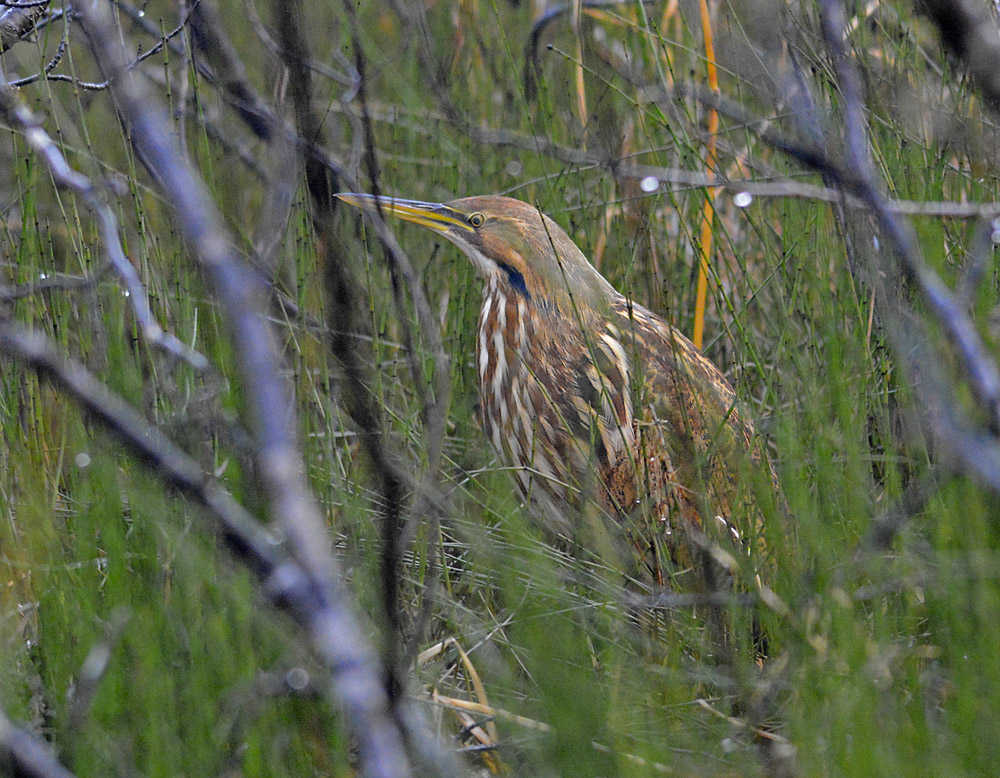On day in early-mid November, I was splashing and splodging around in one of the campground lakes, noting signs of beaver activity. As I emerged from this little exploration and came up onto the road, a streaky brown heron with dark malar stripes (like long mustachios) walked across the road in front of me. Smaller than our familiar great blue heron, this was an American bittern, a bird I had not seen for many decades. This one calmly walked from the road down into the alder swamp from which I had just come. It quickly disappeared in the thickets.
That was mildly exciting, for I suspected that bitterns were uncommon around here. So I sent a message to one of Juneau’s ace bird-watchers, who rounded up a few more “birdos,” and they all enjoyed seeing this locally rare bird. The cameras were clicking, to make the record complete.
This sighting was not as weird and wonderful as those of a hooded oriole in the Mendenhall Valley or the yellow-throated warbler in Gustavus this September. But a compilation of previous sightings in Southeast showed that bitterns have only been recorded in Juneau on three previous occasions: in late summer and fall of 1951, 1958, and 1961. Of the 20 other records, at various seasons, most came from the Stikine area, with two each from the Chickamin, the Chilkat, and Gustavus. A few of the Stikine records were of a calling male, in summer, suggesting that bitterns may occasionally breed there — or try to. Only very diligent searching is likely to find the answer.
Notoriously secretive, bitterns are among the least-studied birds on the continent. They may be more often heard than seen, at least in the breeding season. The males produce a deep, two-toned call that has earned them the sobriquet of “thunder-pump.” Very un-bird-like!
If a calling male attracts a female, it is thought that she does all the work of finding a nest site, making a nest in the marsh or in dense cover nearby, incubating the three to five eggs, and tending the chicks. If that is correct, then one might expect to find that a male often has more than one female and fathers more than one brood of chicks in a season. It would probably take great patience or very good luck to confirm or deny that expectation, given the secretive habits of bitterns.
Bitterns are migratory, at least in the northern parts of their breeding range, which extends — in the Interior — to northern B.C. Some bitterns apparently winter as far north as the Puget Sound region. It would be interesting to find out if our recent mild winters encourage bitterns to wander our way more often.
• Mary F. Willson is a retired professor of ecology.

